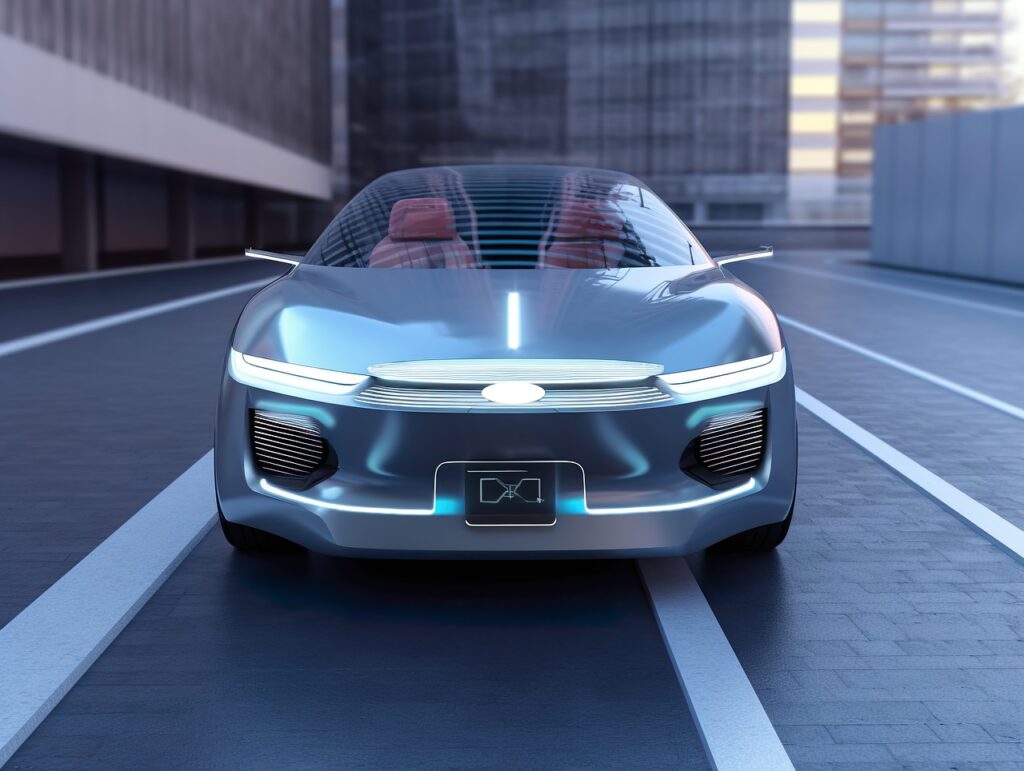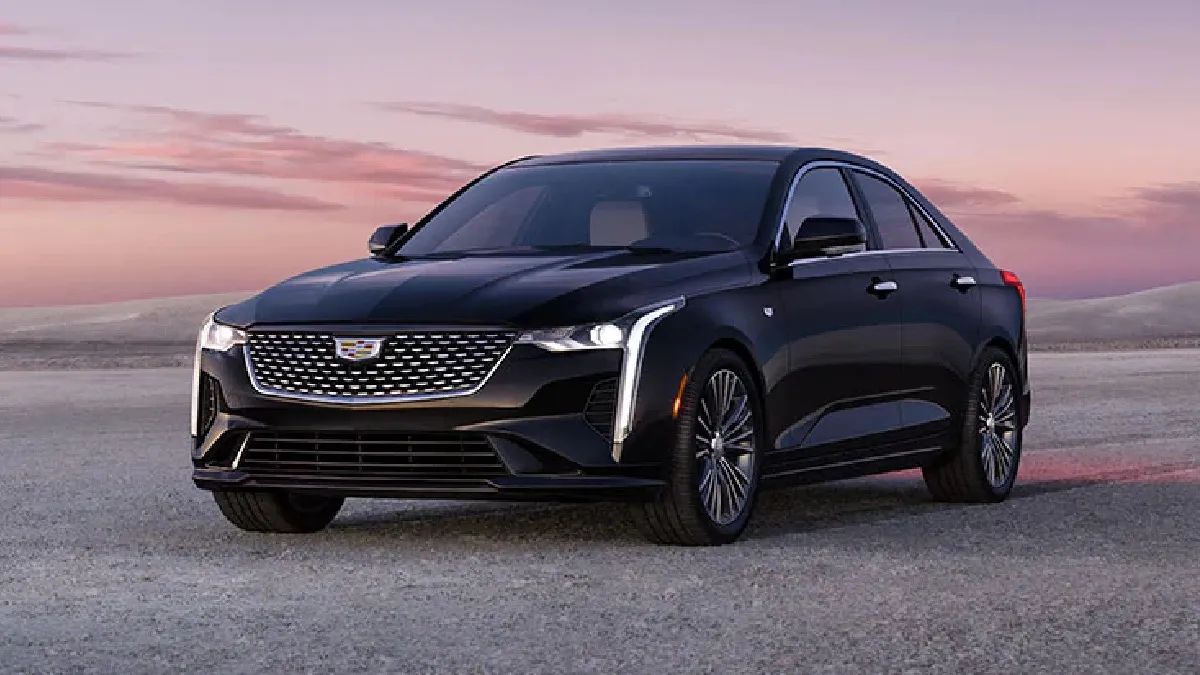
The landscape of automotive technology is evolving at an unprecedented pace, with self-driving features rapidly moving from futuristic concepts to practical realities on our roads. This transformation is not just about convenience; it’s about fundamentally altering the driving experience, promising enhanced safety and reduced driver fatigue. As these advanced systems become more common, understanding their capabilities, limitations, and real-world performance becomes paramount for consumers navigating this complex new frontier.
In our latest comprehensive review, we delved into what we consider the best and most current Level 2 hands-free driving systems available from prominent manufacturers. Our rigorous evaluation included offerings from Ford, General Motors, and BMW, alongside a Tesla Model Y Performance equipped with its renowned Autopilot and Full Self-Driving technology. The objective was clear: to assess how these systems activate, how adeptly they manage diverse highway conditions, and crucially, what they cost consumers.
What we discovered during our testing journey revealed a nuanced picture. While one system ultimately distinguished itself as the strongest all-around performer, the overarching takeaway is that even the most advanced Level 2 systems can exhibit moments of uncertainty. The journey towards full vehicle autonomy is undeniably intricate, and while hands-free driving represents a significant milestone, it underscores that we are still a considerable distance from the final destination of truly driverless cars. This article aims to equip you with a detailed breakdown of these “autopilot”-like features, clarifying the terminology and outlining what each major player brings to the table.
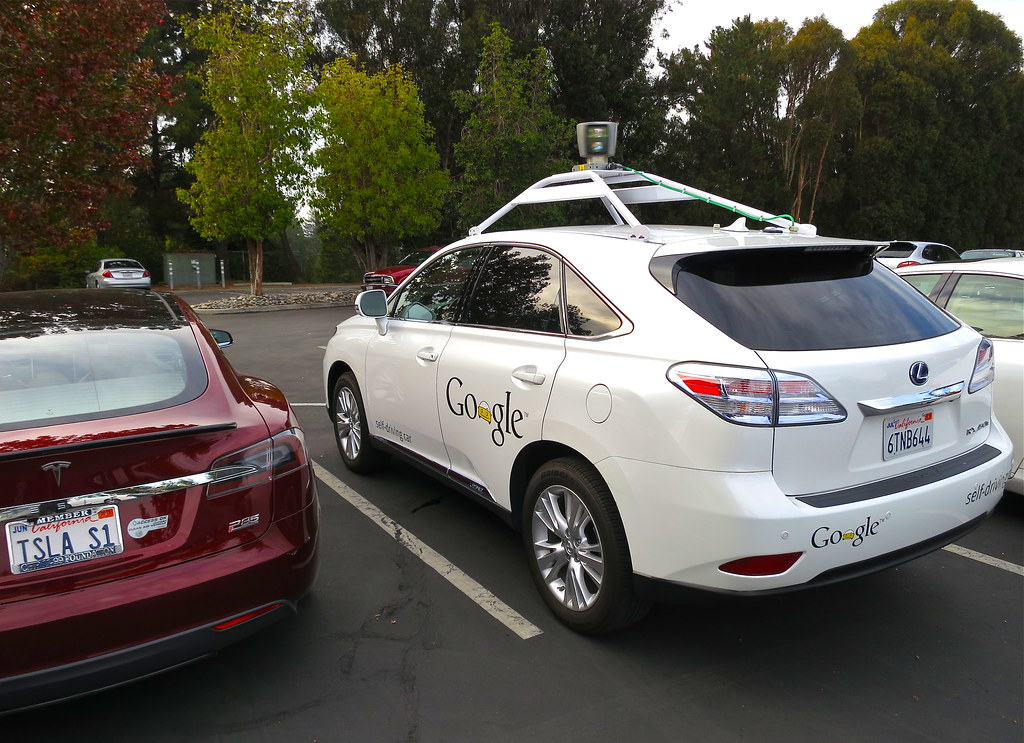
1. **Understanding Self-Driving Car Levels: A Crucial Framework**Before diving into specific vehicle systems, it’s essential to establish a common understanding of what constitutes ‘autopilot’-like features. The term “autopilot” has a rich history, particularly within the aircraft industry, where it has long enabled pilots to lighten their cognitive load during the “cruising” phases of a flight. In the automotive sector, a similar paradigm is emerging, with vehicles increasingly capable of managing portions of a trip, such as freeway driving, autonomously.
To standardize the classification of automotive automation, the industry has adopted a set of levels, ranging from zero to five, offering a clear framework for distinguishing different degrees of capability. Level 0 signifies no automation, where the driver is solely responsible for all driving tasks. Progressing from this baseline, Level 1 introduces semi-automated systems that assist the driver with single tasks, like traditional cruise control, which only controls speed.
Level 2 represents semi-automated systems that can manage both steering, speed, and braking simultaneously, but crucially, still require the driver to remain fully attentive and engaged. This is the level that most mainstream carmakers are currently focused on for their “autopilot” offerings. Beyond Level 2, Level 3 allows automated driving in some conditions, with the driver needing to be available to take over. Levels 4 and 5 signify increasingly automated driving, with Level 5 representing full automation in all conditions, effectively making the vehicle truly driverless.
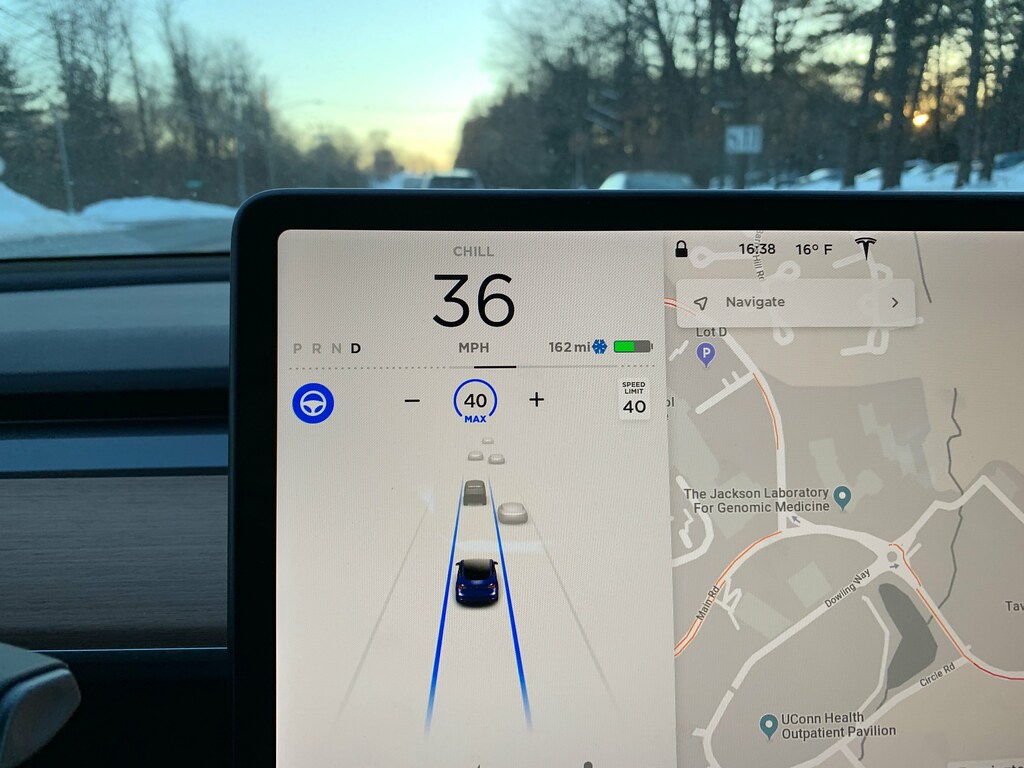
2. **Defining Autopilot and Its Core Level 2 Features**In the context of modern automobiles, “autopilot” has become a generic term, particularly popularized by Tesla. However, its practical application in 2025 predominantly refers to Level 2 autonomy systems. These systems are designed to take over most steering, acceleration, and braking functions, providing significant driver assistance. Despite this advanced capability, it is critical to understand that Level 2 systems are not driverless; they demand that the driver remain fully attentive to the driving situation and be prepared to intervene at any moment.
This distinction is vital: today’s “autopilot” systems are, in essence, ‘assisted driving,’ not ‘self-driving.’ The true promise of full self-driving, where the driver can completely disengage, is reserved for Level 4 or Level 5 fully autonomous cars. While some companies, like Waymo or Cruise, are testing robotaxis with higher levels of autonomy, these are not yet widely available for consumer purchase, with Level 4 or 5 capabilities not expected to be a widespread reality until later in 2025. Mercedes-Benz, however, has made a notable step by releasing a Level 3 system for their 2024 S-Class and EQS Sedan models for limited use in certain states.
At a minimum, Level 2 autopilot functionality for use on controlled-access freeways and highways typically encompasses two core features. The first is Stop-and-Go Adaptive Cruise Control (ACC), an evolution of traditional cruise control. ACC utilizes radar and/or cameras to maintain a safe following distance from the vehicle ahead, automatically adjusting speed, including slowing down to a complete stop in traffic and resuming movement as traffic flows. This feature is particularly valuable for commuters in heavy urban traffic. The second critical component is Automated Lane-Centering (ALC), which distinguishes itself from basic Lane Keeping Assist (LKA). While LKA merely nudges a car back into its lane if it drifts, ALC actively keeps the vehicle centered within the lane, following freeway or highway curves as long as they are mild. Other useful, but not critical, Level 2 autopilot features include Automated Lane Changes, Autopilot on All Roads (though most are freeway-centric), and Follow Navigation Route (freeways only). Currently, only Tesla, with its Full Self-Driving and Enhanced Autopilot options, is able to achieve these additional three features on ‘Hardware 2’ vehicles.
Read more about: Empowering Families: 10 SUVs Equipped with Life-Saving Safety Technology to Halve Accident Risks
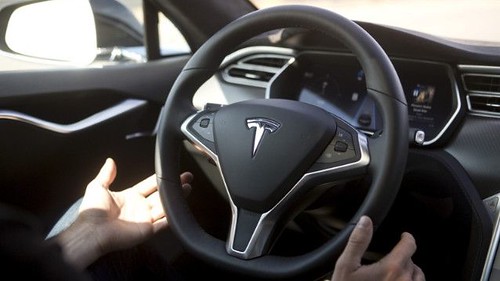
3. **Tesla: A Pioneer in Autopilot and Full Self-Driving Capabilities**Tesla has undeniably established itself as a frontrunner in the realm of automotive self-driving features, famously branding its system as ‘Autopilot.’ Their approach has consistently pushed the boundaries of what’s possible, not just through sophisticated and accurate on-road functionality, but also via a unique over-the-air update mechanism. This allows their vehicles to continually receive software enhancements, ensuring that the technology evolves and improves long after the car leaves the dealership, much like a smartphone.
The underlying technology powering Tesla’s system is highly advanced, utilizing a comprehensive array of sensors. This includes eight cameras strategically placed around the vehicle to provide a full 360-degree view, supplemented by a front-facing radar and long-range ultrasonic sensors. While Tesla continually refines its sensor suite, exemplified by initiatives like Tesla Vision, the core processing power comes from a powerful machine learning computer. Initially, the Full Self-Driving Computer began rolling out in early 2019, and now an even more robust system, known as Hardware 4, is shipping with newer vehicles.
Tesla’s Autopilot and Full Self-Driving features are optional and supported across all current models, including the Model 3, Model Y, Model S, and Model X, specifically those with AP2 and above. While older Tesla models (pre-2016) with AP1 offer an earlier version, they do not encompass the full breadth of current features. Tesla Autopilot boasts exceptional availability, functioning on most roads, including city streets, and with the optional Full Self-Driving package, it can even respond to traffic controls. Its Adaptive Cruise Control provides full start-and-stop functionality, known for excellent and generally smooth acceleration and deceleration. Furthermore, Tesla’s Lane Centering, termed Autosteer, is considered best-in-class, capable of operating on a wide variety of roads. The system also supports automatic lane changes on most roads, including highways and multi-lane city streets, and offers Navigate-on-Autopilot for freeway routing. Driver attentiveness is monitored by detecting hands on the steering wheel, alerting the driver if they are off for more than approximately 15 seconds.
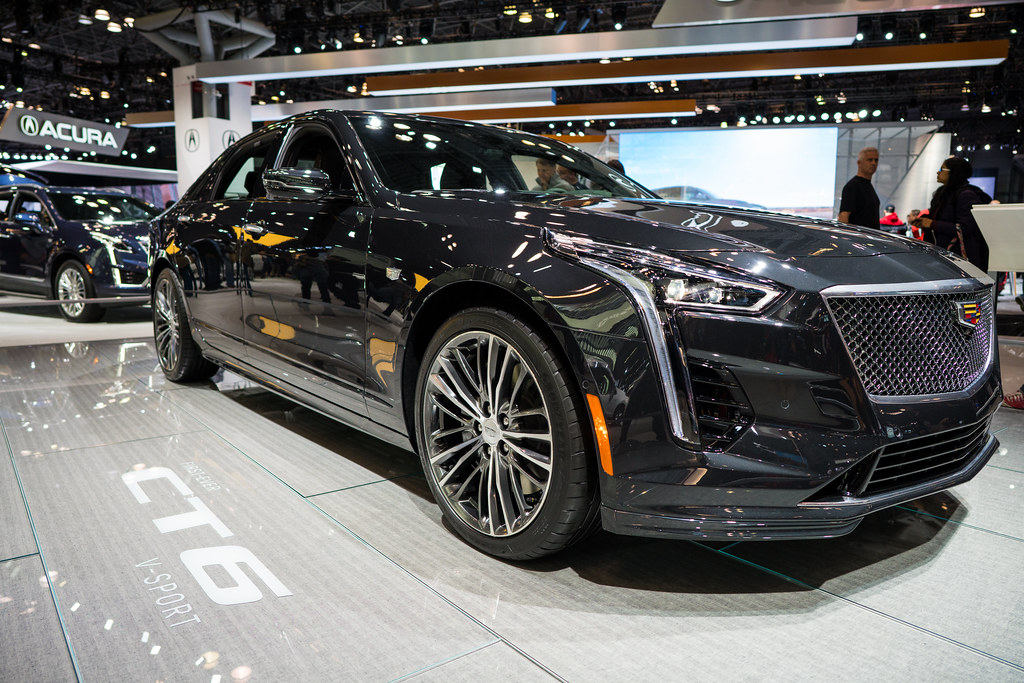
4. **General Motors’ Super Cruise: A Highly Regarded Hands-Free System**General Motors stands out as a significant innovator in self-driving technology, particularly through its highly regarded Super Cruise system and its subdivision, Cruise, which is dedicated to developing fully self-driving fleet vehicles like robotaxis. Super Cruise made its debut on the Cadillac CT6 and has since expanded its availability across a range of GM’s premium and mainstream vehicles, with a more limited version also featured on the Chevy Bolt. GM’s consistent refinements have aimed to keep Super Cruise competitive at the forefront of hands-free driving.
The technology underpinning Super Cruise is a sophisticated integration of various suppliers and sensors. It leverages Intel’s Mobileye platform for visual processing, combined with Trimble RTX for highly accurate positioning data. The system also incorporates forward-facing and side cameras, radar, and crucially, an internal camera from FOVIO dedicated to eye tracking. This multi-faceted approach ensures a robust understanding of both the vehicle’s surroundings and the driver’s attention, which is a key differentiator for the system’s safety and reliability.
Super Cruise is currently supported on a growing list of GM models. This includes the GMC Sierra 1500 Denali and Denali Ultimate, GMC Yukon Denali Ultimate, the GMC Hummer EV Pickup and SUV, the Cadillac Escalade, CT4, and CT5, the Chevrolet Silverado, Tahoe, and Suburban, and the Cadillac LYRIQ. Its core features include full start-and-stop Adaptive Cruise Control and excellent Lane Centering, although the latter is not available on the Chevy Bolt’s limited version. A standout feature is its sophisticated eye-tracking attentiveness monitoring using IR cameras, which ensures the driver’s gaze remains on the road. Super Cruise also offers automated lane changes. Its availability, however, is restricted to mapped US interstates, a strategic limitation designed to enhance safety and predictability for everyday drivers. This driver monitoring system is a primary reason why Consumer Reports has awarded Super Cruise high ratings, even over Tesla’s Autopilot, acknowledging its balance of capability and responsible usage. Looking ahead, GM is developing “Ultra Cruise,” a future version that promises to operate on a wider variety of streets, powered by the Qualcomm “Snapdragon Ride” platform.
Car Model Information: 2018 Cadillac CT6 3.0L Twin Turbo Platinum
Name: Cadillac CT6
Manufacturer: General Motors
Production: January 2016–present
ModelYears: 2016–2020 (North America),2016–present (China)
Class: Full-size,luxury car
BodyStyle: Sedan (car)
Sp: us
Successor: Cadillac Celestiq
Categories: 2010s cars, 2020s cars, All-wheel-drive vehicles, Articles with Chinese-language sources (zh), Articles with short description
Summary: The Cadillac CT6 (short for Cadillac Touring 6) is a full-size luxury car manufactured by Cadillac between 2016 and 2020 over two generations. The first generation CT6 was introduced at the 2015 New York International Auto Show and went on sale in the U.S. in March 2016. It is the first car to adopt the brand’s revised naming strategy, as well as the first rear-wheel drive full-size Cadillac sedan since the Fleetwood was discontinued in 1996.
In 2020, the CT6 was discontinued in the United States, to be replaced by the forthcoming Cadillac Celestiq liftback sedan.
Get more information about: Cadillac CT6
Buying a high-performing used car >>>
Brand: Cadillac Model: CT6
Price: Not Priced Mileage: 59,119 mi.

5. **VW / Audi / Porsche: Advanced Ambitions, Current Realities**The Volkswagen Group, a massive automotive conglomerate encompassing brands like VW, Audi, and Porsche, has made significant strides and expressed aggressive ambitions in the self-driving arena. Notably, Audi has been at the forefront, even touting a Level 3 system in Europe. However, due to regulatory hurdles, this advanced Level 3 capability is not yet available in the United States, meaning that Audi’s current autopilot functions in the US market remain largely comparable to other manufacturers’ Level 2 offerings.
Audi’s Level 2 system is marketed under various names depending on speed and market, including Active Lane Assist with Stop & Go for higher speeds and Traffic Jam Assist for lower speeds. The much-anticipated Level 3 version, capable of hands-off driving at speeds under 37 MPH, is called “Traffic Jam Pilot” and is available in some other countries. The technology stack employed by Audi is quite advanced, including the integration of the first Lidar unit in a consumer vehicle (seen in the A8, A6, and Q8 models) and a new zFAS controller that consolidates sensor inputs into a single computing unit for efficient processing. They also collaborate with Mobileye, utilizing their EyeQ 4 chips for crucial perception inputs.
Currently, these features are supported on models such as the Audi A6, A8, and Q8, with rollout to additional models anticipated. The system’s availability is tied to roads with clear markings on both sides, with Active Lane Assist working above 37 MPH and Traffic Jam Assist below that speed. It offers full start-and-stop Adaptive Cruise Control, though drivers must manually press resume if the vehicle is stopped for longer durations. The lane centering, described as “Fair,” is more akin to Lane Keeping Assist, suggesting it nudges the car back rather than actively centering it with consistent precision. Driver attentiveness is monitored by requiring hands on the steering wheel. While Audi also offers other features like remote-controlled parking on the A6 and A8, the overall verdict is that while their aggressive pursuit of advanced autonomous technologies is clear, it has not yet translated into a distinctly superior product for the US market beyond what competitors offer in terms of Level 2 capabilities.

6. **BMW: Feature-Rich Driving Assistant Pro**BMW has long incorporated adaptive cruise control and rudimentary lane centering into its vehicles. However, starting with certain 2019 models, the company rolled out new, more advanced technology under the “Driving Assistant Pro” suite. An important consideration for BMW owners is that, unlike some competitors, these systems are not updated over the air; updates typically require a visit to the dealership for installation. This approach can mean a slower pace of feature enhancement compared to over-the-air systems.
The technological foundation of BMW’s Driving Assistant Pro, particularly with its Extended Traffic Jam Assistant, relies on the Mobileye EyeQ platform for sensor input processing. Control software is managed by ZF, and the newest models integrate the EyeQ 4 chip with a tri-focal camera setup specifically for forward vision. The system is further bolstered by forward and rear radar sensors, providing a comprehensive understanding of the vehicle’s surroundings. Additionally, with some optional packages, an eye monitoring camera is included to enhance driver attentiveness tracking.
These advanced features are available on select BMW models, including the BMW X5, 7 Series, and 3 Series. The system boasts impressive availability, functioning at speeds up to 115 mph on roads with clear markings. A notable highlight is the hands-free option, which utilizes the eye sensor to monitor driver attentiveness, enabling hands-free operation at speeds under 40 mph, particularly useful in heavy traffic. While Adaptive Cruise Control offers full start-and-stop functionality, the lane centering capabilities are described as “Basic” and have been reported to exhibit “ping-ponging” behavior between lanes, suggesting it may not maintain a smooth, consistent center as effectively as some leading systems. Attentiveness monitoring is primarily through eye-tracking, and the system also includes automatic lane changing upon driver request, provided the surroundings are clear. Despite being feature-rich, the verdict is that while the low-speed hands-free option is appealing, BMW’s lane centering, a crucial aspect of autopilot functionality, has not performed as robustly as some of its competitors in our assessments.
Continuing our examination of leading autopilot technologies, we turn our attention to additional prominent systems that are shaping the future of driving assistance. This segment further unpacks how various manufacturers approach Level 2 autonomy, assessing their unique strengths, technological foundations, and real-world performance, before culminating in a holistic view of autopilot quality criteria and the trajectory of autonomous driving. Our aim is to provide consumers with a clear, objective understanding of what to expect from these evolving systems.
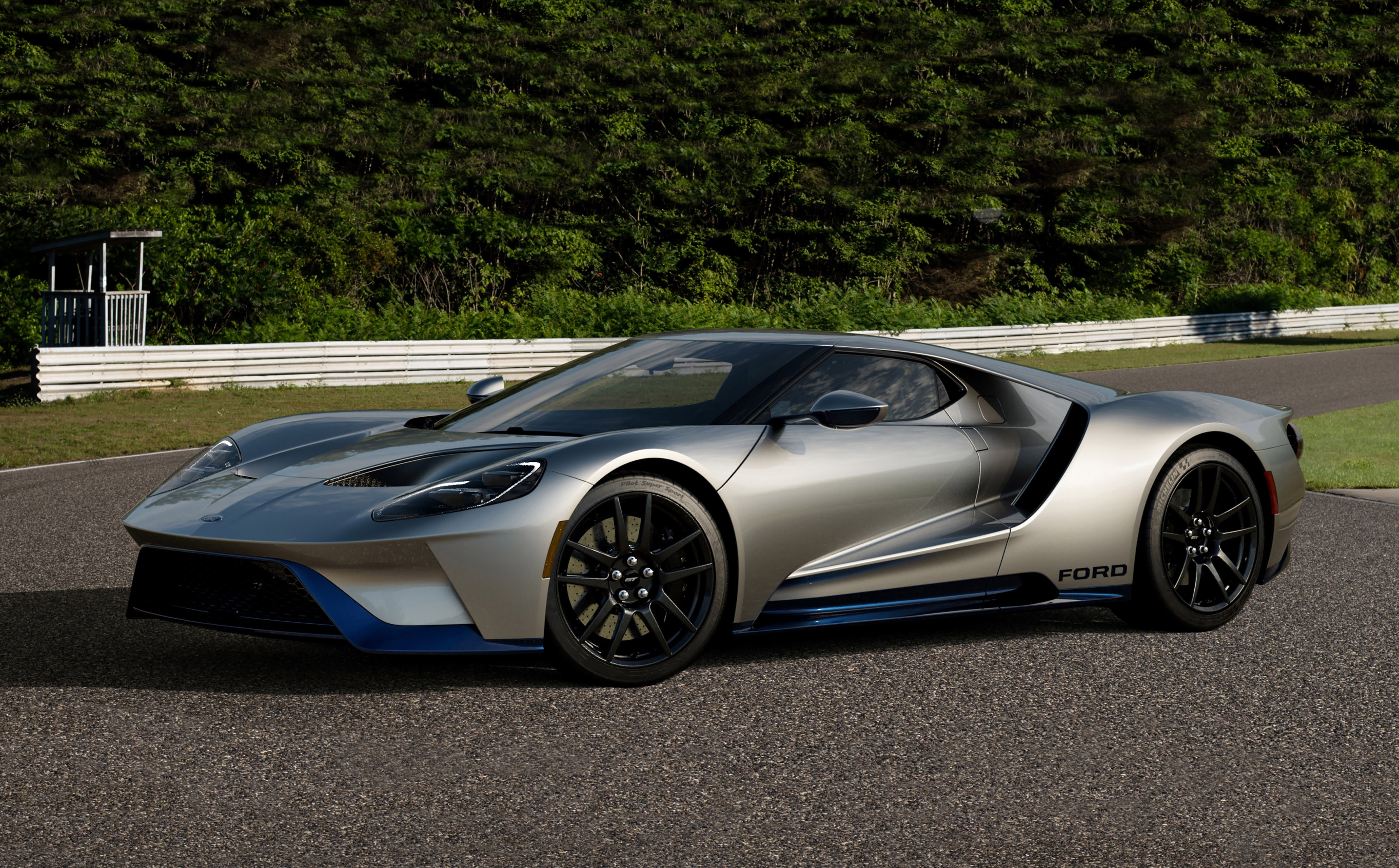
7. **Ford / Lincoln: BlueCruise’s Highway Dominance**Ford has significantly advanced its driver assistance offerings, evolving from the foundational Co-Pilot 360 to the more sophisticated BlueCruise system. While Co-Pilot 360 provides basic stop-and-go Adaptive Cruise Control (ACC) and rudimentary Lane Centering (ALC) with Lane Keeping Assist (LKA) in many current vehicles, the true leap forward arrived with Co-Pilot 360 2.0, now famously branded as BlueCruise on select models. This system marks Ford’s entry into more advanced, Tesla-like autopilot capabilities, signifying a robust commitment to enhancing the driving experience.
BlueCruise, requiring an optional subscription, leverages advanced technology for its autonomous features. Ford has partnered with Mobileye, integrating their EyeQ technology components into its system. This collaboration allows for sophisticated sensor input processing, which underpins the system’s ability to provide hands-free driving capabilities on pre-mapped segments of divided highways, a crucial differentiator in the Level 2 landscape.
The Active Driver Assist feature, part of Co-Pilot 360 2.0/BlueCruise, is progressively rolling out to key models such as the Mustang Mach-E and the Ford F-150. Its core functionalities include availability on well-marked lanes under good conditions, particularly on freeways. It offers full start-and-stop Adaptive Cruise Control, effectively managing traffic flow. Lane centering is rated as “Good,” demonstrating competence on straight roads and gentle curves, though it may not handle sharp turns with the same precision as some leading systems. Driver attentiveness is monitored through steering wheel detection, ensuring engagement.
Beyond these core features, Ford’s system also incorporates useful enhancements like Speed Sign Recognition for automatic speed adjustment, contributing to a more adaptive driving experience. Additionally, it includes Evasive Steering Assist, which aims to help avoid collisions with detected objects when possible. In our assessment, the Ford/Lincoln Co-Pilot 360 system, particularly the BlueCruise iteration, stands as a highly capable autopilot offering that significantly eases long commutes and freeway driving, making it a compelling choice for consumers.

8. **Kia / Hyundai: Impressive and Accessible Level 2 Autonomy**The Hyundai Motor Group, encompassing both Hyundai and Kia Motors, has made notable strides in Level 2 driving assistance technology. Despite a 2019 investment in the self-driving startup Aurora, the fruits of that collaboration have not yet reached public release. Nevertheless, their current Level 2 offerings are widely considered “best-in-class” outside of the more advanced systems like Tesla’s Autopilot and GM’s Super Cruise, demonstrating a strong commitment to practical, consumer-oriented autonomy.
These systems are known by several names depending on their combined functionality. Lane Following Assist (LFA) provides active lane keeping, while Smart Cruise Control with Stop and Go (SCC) handles adaptive speed and distance control, including full stops and restarts. Highway Drive Assist (HDA) integrates both LFA and SCC, further enhancing the system by automatically adjusting to speed limits on freeways. Hyundai and Kia currently employ an in-house technology designated as HDA2, though future iterations may incorporate technology from their Aurora investment or continued collaboration with Intel/Mobileye, likely utilizing their EyeQ sensors.
These advanced features are available across a range of popular models, including the Hyundai Palisade, Sonata, and Kia Telluride, among others. The systems boast broad availability, functioning effectively on any road with well-marked lanes under good conditions. They provide full start-and-stop Adaptive Cruise Control, noted for its smooth operation. The lane centering capabilities are rated as “Excellent,” indicating consistent and precise vehicle positioning within the lane, although they are not designed to handle sharp turns.
Driver attentiveness is monitored through steering wheel detection, prompting the driver to maintain engagement. Additional features include automatic speed limit adjustment on freeways, which enhances compliance and convenience, and a Blind View Monitor that displays the side-view mirror camera feed if an obstacle is detected in the blind spot. The verdict underscores that Hyundai and Kia’s Level 2 driving-assist implementations are remarkably impressive, offering a robust and highly effective solution for daily commutes.

9. **Volvo: Safety-Focused, But Lagging in Autopilot Refinement**Volvo has long been recognized as a pioneer in automotive safety technology, consistently integrating advanced safety systems and basic lane centering across its entire vehicle lineup. However, in the rapidly evolving landscape of self-driving features, Volvo has experienced some setbacks, including a decision to switch technological platforms. This strategic shift has unfortunately resulted in delays for the rollout of more sophisticated autopilot-like features compared to some competitors.
Currently, Volvo’s primary driver assistance system is known as Pilot Assist, with its latest iteration being Pilot Assist II. The technology underpinning this system leverages the Mobileye EyeQ 3 platform, coupled with a front-facing camera and radar system (specifically Delphi’s RaCAM – Radar and Camera Sensor Fusion System, typically mounted on the windshield). This integrated sensor suite provides the necessary data for the system’s operational capabilities.
Looking ahead, Volvo has ambitious plans to enhance its autonomous driving offerings with future versions, tentatively named “Ride Assist” or “Highway Assist.” These forthcoming systems are projected to transition from Mobileye technology to the more powerful NVIDIA Orin chipset and will incorporate front-facing Luminar LiDAR for improved perception. Software development for these advanced features will be handled by Zenseact. Pilot Assist II is currently supported across all Volvo models, including the XC90, XC60, XC40, and their sedan offerings.
Regarding core features, Pilot Assist II is available on any road with clear lane markings and provides full start-and-stop Adaptive Cruise Control, which is helpful in congested traffic. However, its lane centering capabilities are rated as “Fair,” with reports indicating that the vehicle “may sometimes drift from lane,” suggesting less consistent precision than some top-tier systems. Driver attentiveness is monitored by detecting if the driver is holding the steering wheel. The verdict concludes that while Volvo’s system is beneficial for straight stop-and-go traffic, its performance on roads with curves, where it struggles to maintain consistent lane positioning, means it cannot be fully trusted for robust autopilot functionality.
---Front-3869660-2560x1440.jpg)
10. **Mercedes-Benz: Pioneering Level 3 Autonomy**Mercedes-Benz, a luxury automotive leader, played a significant role in pioneering adaptive cruise control back in the late 1990s with its S-Class sedan. The company has consistently integrated the latest technological advancements into its vehicles, ensuring that its Driver Assistance Package PLUS system offers a comprehensive suite of Level 2 features. This package includes Active Distance Assist DISTRONIC, Active Steering Assist, Active Lane Keeping Assist, and Active Lane Change Assist, providing robust support for everyday driving scenarios.
A groundbreaking development for Mercedes-Benz is its Level 3 Drive Pilot system, which represents a significant leap forward in autonomous driving. This system is the first Level 3 solution approved for consumer production vehicles in the US, specifically offered in their 2024 S-Class and EQS Sedan models. Crucially, Drive Pilot allows drivers to “hand over control to the vehicle and not monitor the road full time” under specific conditions—on limited roads and at certain speeds. This differentiates it from all other Level 2 systems, which still demand constant driver attentiveness, making Mercedes-Benz a pioneer in true conditional autonomy for the consumer market.
The technology behind Mercedes’ systems is a sophisticated integration of various suppliers. For its Level 2 ADAS offerings, Mercedes works with LG, Bosch, and NVIDIA, combining camera and radar inputs for robust environmental perception. For the Level 3 Drive Pilot, additional sensors are incorporated, including LiDAR and a rear camera. This advanced setup is complemented by redundant steering and braking actuators, which are critical for ensuring the high levels of safety and reliability required for conditional autonomous operation.
Core features of the Level 2 system include availability on any roads with clear lane markings, full start-and-stop Adaptive Cruise Control that intelligently adjusts speed for curves based on map data, and “Good” lane centering for gentle curves. Driver attentiveness is monitored by requiring hands on the steering wheel, and the system also offers Active Lane Change Assist and automated remote parking. The verdict highlights that while the current Level 2 system performs capably, the introduction of the Level 3 Drive Pilot system marks Mercedes-Benz as the first manufacturer to offer a truly autonomous driving experience, albeit within specific operational design domains, setting a new benchmark in the industry.
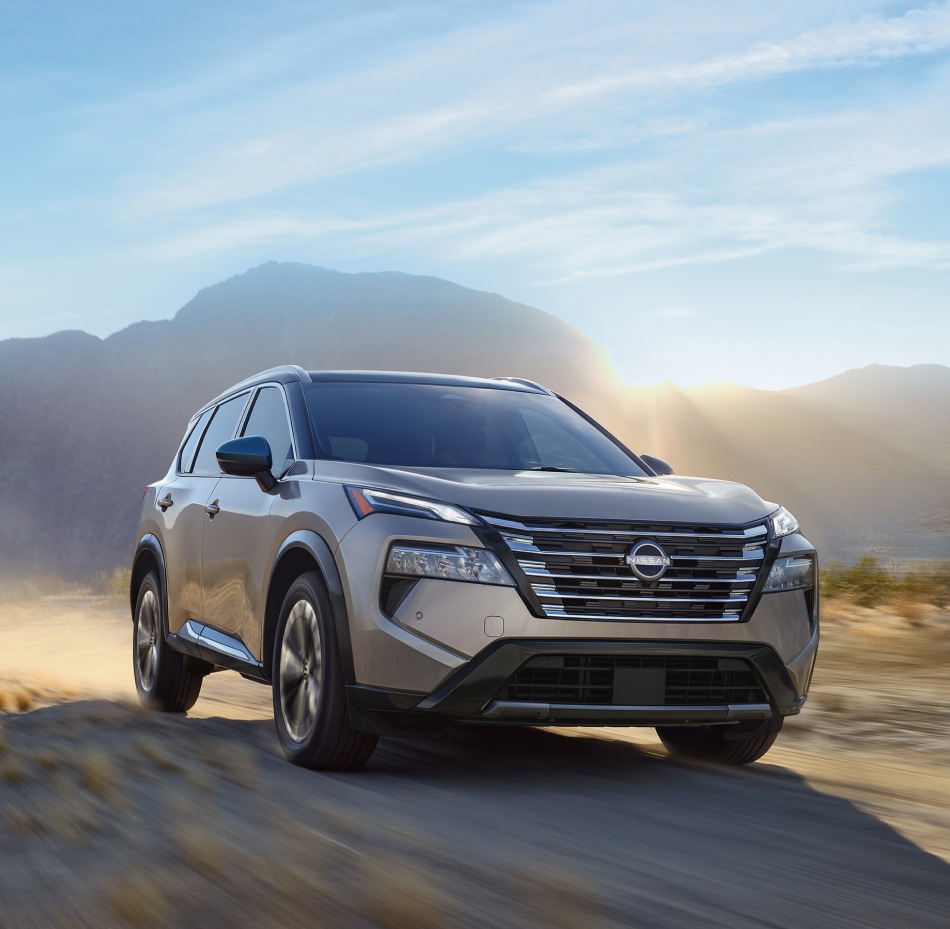
11. **Nissan / Infiniti: ProPilot Assist for the Masses**Nissan and its luxury brand Infiniti have made commendable efforts in democratizing access to practical safety and self-driving technologies through their ProPilot Assist system. This integration allows advanced driver assistance features to be available on a broader range of models, including more accessible vehicles such as the Nissan Rogue, making modern autonomy more widely attainable for consumers.
The ProPilot Assist system relies on a well-established technological foundation. It utilizes the Mobileye EyeQ platform, which processes inputs from both forward camera and radar sensors. This sensor fusion approach enables the system to build a comprehensive understanding of the vehicle’s surroundings, supporting its adaptive cruise control and lane assistance functionalities. Supported models include the Nissan Rogue, Nissan LEAF, and the Infiniti QX50, demonstrating its rollout across different segments of their respective lineups.
Key features of ProPilot Assist include its availability on roads with clear markings on both sides, typically operating above 37 MPH. It offers full start-and-stop Adaptive Cruise Control, efficiently managing vehicle speed in traffic, though drivers must manually press the accelerator if the vehicle remains stopped for more than three seconds. The lane centering capability is described as “Fair,” often performing more like a Lane Keeping Assist system that nudges the car back into the lane rather than actively maintaining a consistent center. Driver attentiveness is monitored by detecting hands on the steering wheel.
Other notable features include parking assist, which adds convenience in urban environments. The verdict indicates that while Nissan and Infiniti’s ProPilot system does an admirable job of bringing basic autopilot features to a wide audience, its automated lane centering, a crucial aspect of seamless autopilot functionality, is only fair. Nissan has announced a more advanced ProPILOT 2.0 for the Japanese market, but its potential release in the US remains uncertain at this time.
Car Model Information: 2016 Nissan Rogue SL
Name: Nissan Rogue
Caption: 2023 Nissan Rogue SV (US)
Manufacturer: Nissan
Aka: Nissan X-Trail
Production: 2007–present
ModelYears: 2008–present
Class: Compact crossover SUV
BodyStyle: SUV
Layout: Front-engine, front-wheel-drive layout
Predecessor: Unbulleted list
Categories: 2010s cars, All-wheel-drive vehicles, All articles lacking reliable references, Articles lacking reliable references from November 2017, Articles with short description
Summary: The Nissan Rogue is a compact crossover SUV produced by the Japanese automobile manufacturer Nissan. It made its debut in October 2007 for the 2008 model year. Beginning in 2013 for the 2014 model year, the model has been merged with the X-Trail sold outside the North American market, making them identical.
As of 2023, the Rogue was manufactured at the Nissan Smyrna Assembly Plant in Tennessee, United States and at the Nissan Motor Kyushu plant in Kanda, Fukuoka, Japan. Between August 2014 and March 2020, it was also built at the Renault Samsung Motors plant in Busan, South Korea under contract.
Get more information about: Nissan Rogue
Buying a high-performing used car >>>
Brand: Nissan Model: Rogue
Price: $12,787 Mileage: 79,067 mi.
12. **Comma.ai – DIY Autopilot: An Emerging Open-Source Alternative**For automotive enthusiasts and tech-savvy tinkerers seeking cutting-edge autopilot features that might push beyond standard manufacturer offerings, Comma.ai presents a unique “DIY autopilot kit.” This solution is built upon the open-source openpilot software and is designed to integrate with specific newer-model vehicles, effectively “supercharging” their existing driver assistance capabilities with advanced intelligence. It represents an intriguing alternative for those who wish to customize and enhance their car’s autonomous functions.
The technological foundation of Comma.ai’s openpilot software is particularly noteworthy. It leverages sophisticated machine learning and neural network capabilities, allowing for a more nuanced and adaptive understanding of driving environments than many factory-installed systems. This approach enables it to continuously learn and improve, much like how Tesla’s over-the-air updates evolve its Autopilot, but with the added flexibility of an open-source platform.
The openpilot solution has garnered significant recognition, notably receiving “high praise from Consumer Reports in terms of overall capabilities and functions.” This independent validation underscores its robust performance and effectiveness, positioning it as a credible, albeit non-traditional, player in the autonomous driving space. Furthermore, Aptera, an emerging electric car manufacturer, has announced plans to integrate openpilot into its vehicles, signaling a growing acceptance and integration of this open-source technology within the broader automotive industry.
The verdict on Comma.ai’s DIY autopilot is that it serves as an excellent “emerging solution” for those dedicated to pushing the boundaries of vehicle autonomy. While it requires a certain level of technical engagement from the user, its advanced machine learning and neural network capabilities offer a powerful and continually evolving autopilot experience, making it a compelling option for those who want to actively participate in the evolution of self-driving technology.
**Evaluating AutoPilot Quality: What Truly Matters**
As autopilot-like functions become increasingly common, merely possessing these features is insufficient; their actual performance and reliability are paramount. When assessing the quality of any autopilot system, several critical criteria emerge that consumers and testers alike should scrutinize.
First, **Availability** is key. A system’s utility is directly tied to where and when it can be used—whether it’s limited to pre-mapped freeways, or if it extends to a wider variety of roads, including city streets that require responsiveness to traffic controls. The more versatile the system, the greater its practical value in diverse driving conditions.
Secondly, **Lane Centering Accuracy** stands as a defining characteristic of a superior autopilot. This goes beyond basic Lane Keeping Assist (LKA), which only corrects drifting. A truly effective system consistently keeps the vehicle precisely centered within the lane, even through mild turns. Challenges typically arise with sharp curves or at higher speeds, where human intervention is often still necessary. A system that ‘ping-pongs’ between lane markers indicates less sophisticated control.
Next, **Smooth Acceleration and Deceleration** are crucial for a comfortable and safe driving experience with Adaptive Cruise Control (ACC). While ACC has been around, perfecting its ability to maintain safe following distances and execute seamless speed adjustments—especially down to a full stop and subsequent resumption in traffic—is not a trivial task. Jerky or abrupt movements can undermine driver confidence and comfort.
**Attentiveness Monitoring** is another vital criterion. The method by which a system ensures the driver remains engaged is critical for safety. While many systems primarily check for hands on the steering wheel, more advanced implementations, like GM’s Super Cruise, utilize internal cameras for sophisticated eye-tracking, ensuring the driver’s gaze remains focused on the road ahead. This distinction significantly impacts the system’s overall safety rating and consumer trust.
Finally, the system’s capacity for **Emergency and Evasive Actions** at freeway speeds is arguably the most challenging and important aspect. The ability to detect potential collisions and ideally initiate evasive maneuvers is complex due to the myriad of unexpected real-world scenarios. This inherent difficulty is precisely why most Level 2 systems still mandate constant driver attentiveness, highlighting that full, unsupervised autonomy in critical situations remains a significant hurdle yet to be fully overcome.
**The Road Ahead for Autopilot Technology**
Autopilot-like functions are steadily transitioning from niche luxury features to mainstream expectations as technological capabilities continue to improve at a rapid pace. By late 2025, it is anticipated that the vast majority of car manufacturers will be offering some form of more advanced self-driving capabilities across their model lineups, reflecting a widespread adoption of these sophisticated driver assistance systems. This proliferation underscores a global shift towards enhancing vehicle safety, convenience, and efficiency through automation.
For consumers seeking the most powerful and comprehensive AutoPilot-like functionality available today, systems from Tesla and General Motors, particularly with Super Cruise, continue to represent the pinnacle of current capabilities. Their consistent innovation and robust performance set high benchmarks within the industry. Additionally, Mercedes-Benz has emerged as a trailblazer with its Level 3 Drive Pilot system, offering a glimpse into truly conditional autonomous driving that allows for driver disengagement under specific, defined parameters. The journey toward full vehicle autonomy is dynamic and complex, with each new development bringing us closer to a future where driving is safer, smarter, and ultimately, more seamless for everyone on the road.

